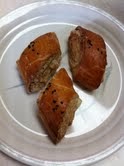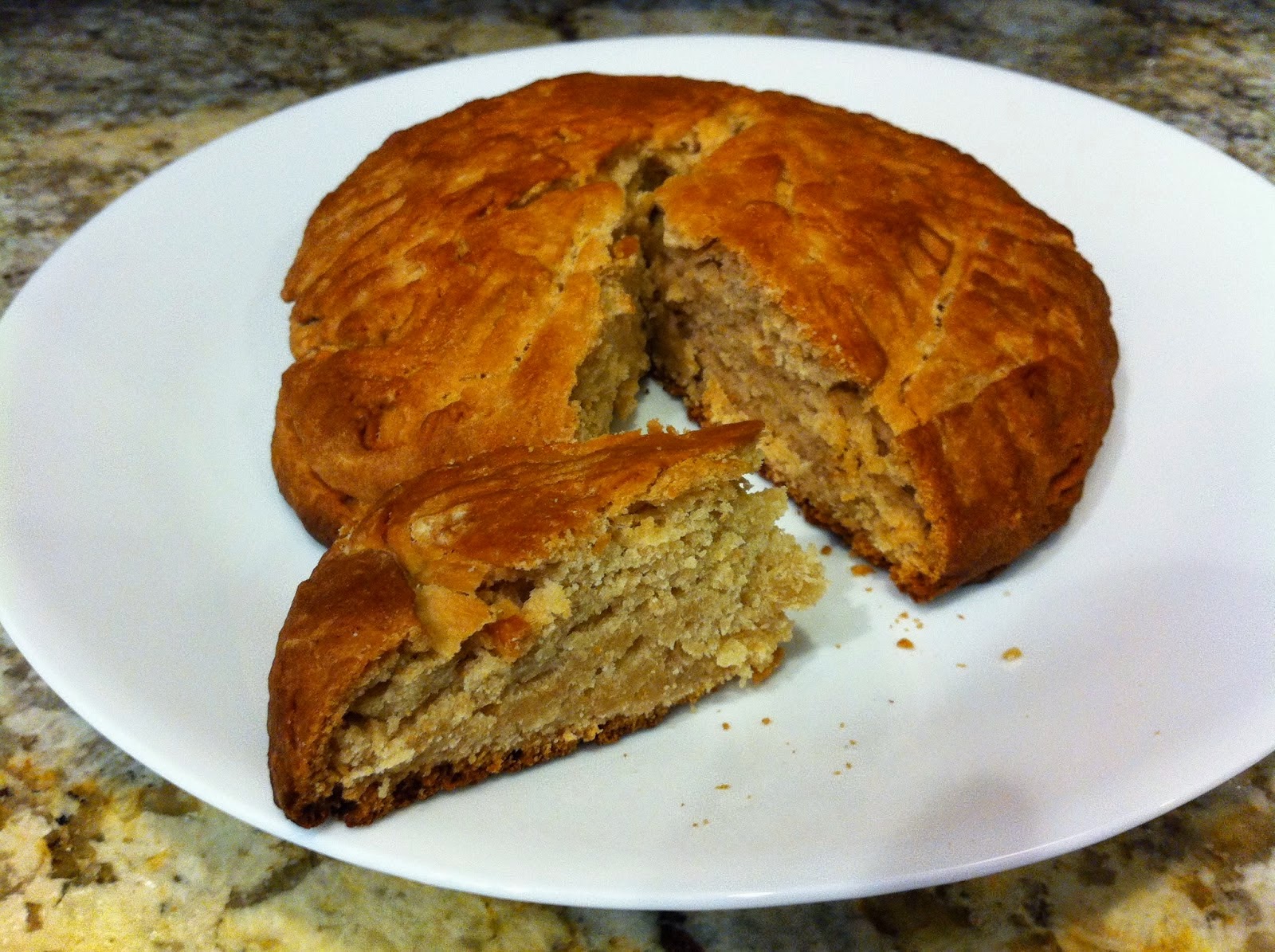In response to my post about the confusion surrounding pagharch, bagahj, and so on, Pam Aghababian
offered her family’s interpretation on the recipe names in question.
Pam said:
“My family uses these words in the following ways:
Khoritz refers
to the filling used in Barbara’s Hovsepian’s (baghaj) recipe.
to the filling used in Barbara’s Hovsepian’s (baghaj) recipe.
Nazook is
a cookie, close to a rugelach, that looks like the finished product in that
recipe.
a cookie, close to a rugelach, that looks like the finished product in that
recipe.
Gata (katah) uses no filling (khoritz); it is
almost like a croissant, except that instead of using a *laminated dough*, you roll
the dough out very thin and then roll it in on itself.”
almost like a croissant, except that instead of using a *laminated dough*, you roll
the dough out very thin and then roll it in on itself.”
 |
| Laminated Dough (Image from kingarthurflour.com) |
NOTE: A *laminated dough* is created by
alternating layers of dough and butter when making pastry.
Pam continued:
alternating layers of dough and butter when making pastry.
Pam continued:
“However, none of these refer to an unleavened flatbread made without
salt (as defined in Irina Petrosian’s book – Armenian Food: Fact, Fiction, and
Folkore in reference to bagharj) So, is (Irina’s description of bagharj) the same as the Armenian cracker bread you can find in stores?”
Ah, more questions!
salt (as defined in Irina Petrosian’s book – Armenian Food: Fact, Fiction, and
Folkore in reference to bagharj) So, is (Irina’s description of bagharj) the same as the Armenian cracker bread you can find in stores?”
Ah, more questions!
(Visited 828 times, 1 visits today)




